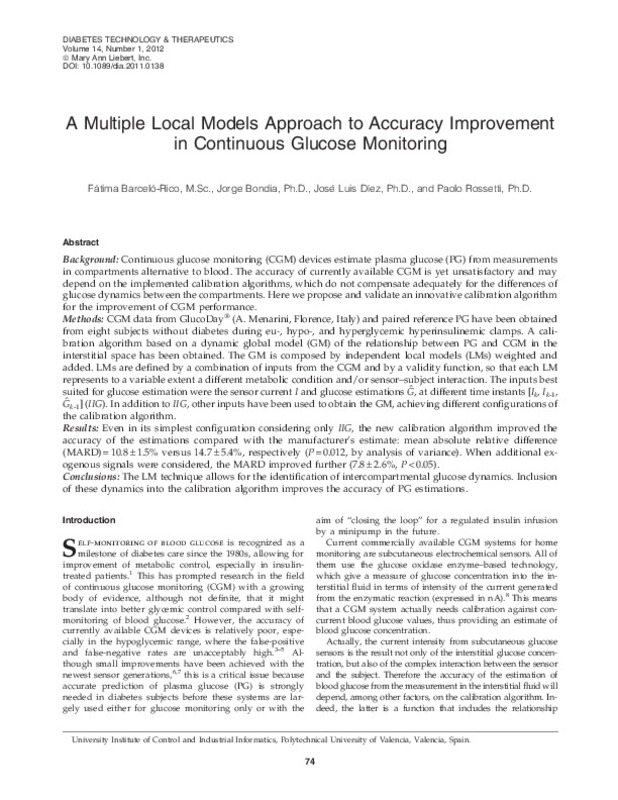JavaScript is disabled for your browser. Some features of this site may not work without it.
Buscar en RiuNet
Listar
Mi cuenta
Estadísticas
Ayuda RiuNet
Admin. UPV
A multiple local models approach to accuracy improvement in continuous glucose monitoring
Mostrar el registro completo del ítem
Barceló Rico, F.; Bondía Company, J.; Diez Ruano, JL.; Rossetti ., P. (2012). A multiple local models approach to accuracy improvement in continuous glucose monitoring. Diabetes Technology & Therapeutics. 14(1):74-82. https://doi.org/10.1089/dia.2011.0138
Por favor, use este identificador para citar o enlazar este ítem: http://hdl.handle.net/10251/29569
Ficheros en el ítem
Metadatos del ítem
| Título: | A multiple local models approach to accuracy improvement in continuous glucose monitoring | |
| Autor: | Barceló Rico, Fátima Rossetti ., Paolo | |
| Entidad UPV: |
|
|
| Fecha difusión: |
|
|
| Resumen: |
[EN] Background: Continuous glucose monitoring (CGM) devices estimate plasma glucose (PG) from measurements in compartments alternative to blood. The accuracy of currently available CGM is yet unsatisfactory and may depend ...[+]
|
|
| Palabras clave: |
|
|
| Derechos de uso: | Reserva de todos los derechos | |
| Fuente: |
|
|
| DOI: |
|
|
| Editorial: |
|
|
| Versión del editor: | http://online.liebertpub.com/doi/pdfplus/10.1089/dia.2011.0138 | |
| Código del Proyecto: |
|
|
| Descripción: |
|
|
| Agradecimientos: |
The authors acknowledge the partial funding of this work by the Spanish Ministry of Science and Innovation projects
DPI2007-66728-C02-01 and DPI2010-20764-C02-01 and by the European Union through FEDER funds and grant ...[+]
|
|
| Tipo: |
|









